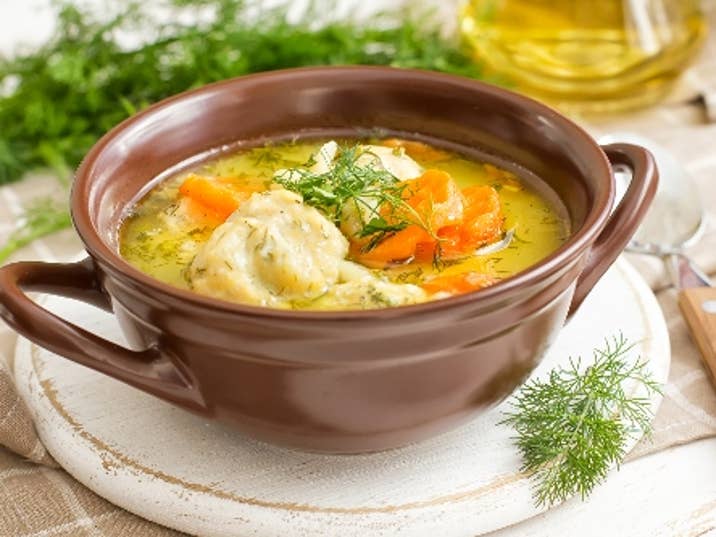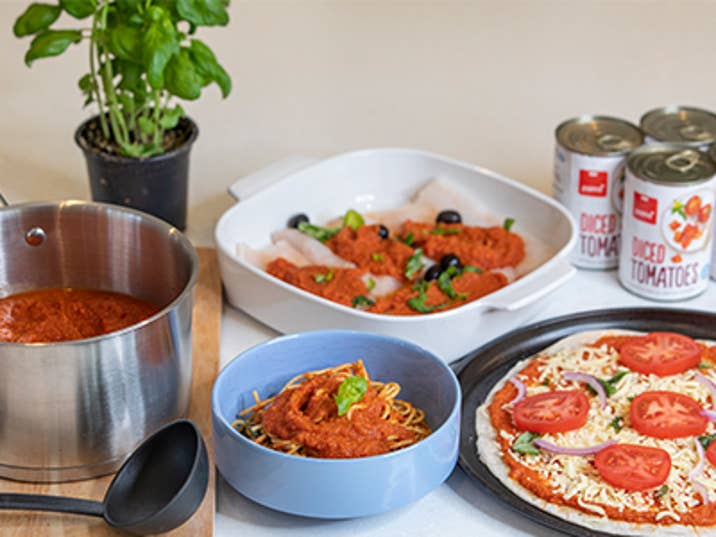6 Celery health benefits |10 ways to cook celery
Crisp, crunchy celery
Celery is incredibly good for you - Here are 10 delicious ways to enjoy the health benefits of celery and celery juice.
The celery plant or apium graveolens, is a vegetable from the Apiacaea family which also includes parsley, carrots, parsnips and celeriac. Two types of celery exist, white which is popular in Europe and green, which first arrived in New Zealand from the US in the 1960s. A bunch of celery comprises several thick celery stalks, held together by the heart and tapering to form bright green shoots and leaves at the top.
Celery is available to buy in New Zealand all year round.
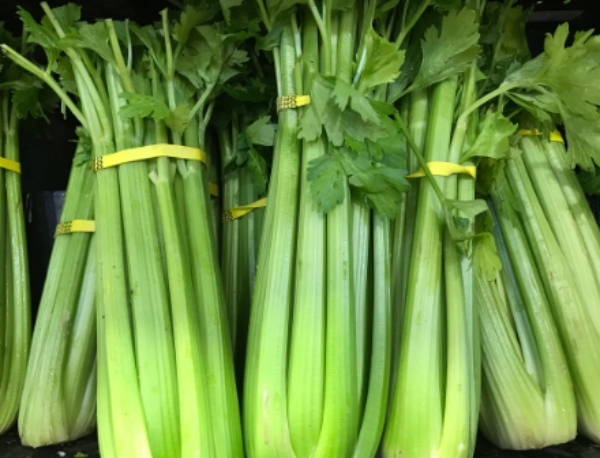
Tips for buying and storing celery
Celery with its leaves are sold as a full or half bunch, a celery heart is a bunch without leaves. Smaller trays of celery sticks are the perfect size to flavour a dish.
- Look for tight bunches of firm, sturdy, upright stalks, which snap and don't bend.
- Look for crisp, bright green leaves.
- Avoid celery with brown or yellow patches near the heart, indicating its beginning to deteriorate.
- Wash and refrigerate immediately.
- Whole celery can last between 2-4 weeks in the refrigerator but should be stored tightly wrapped in foil and placed in the crisper drawer.
- If your celery goes limp, pop it into a basin of cold water to refresh and it will crisp up once again.
- You can freeze celery stalks and leaves to use in soups and casseroles at a later date. We recommend you wash thoroughly first, slice and seal in a freezer bag.
How to prepare celery
Now that producers have developed less fibrous varieties of celery, it isn’t necessary to peel the stalks. Once washed, this versatile ingredient can be eaten as a raw vegetable, boiled, steamed, roasted, braised and fried.
How to cut celery stalks
Celery can be cut into halves or thin sticks, shaved thinly with a mandolin and thinly sliced or diced into small pieces.
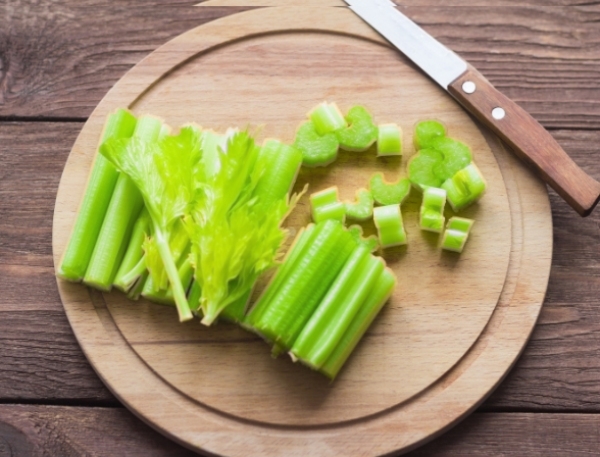
Reduce food waste and eat the leaves
Apart from the heart which should be trimmed and discarded, the stems and leaves are edible, so don't waste any of it. Remember you can chop and freeze what you're not ready to use to reduce food waste. The leaves can be cooked in the same way as the stalks, but be aware that the flavour is slightly more bitter. You can add them to smoothies, stir fries, soups and juices.
Fresh vs. Frozen celery
Frozen celery is a convenient option for soups, stews, casseroles and slow cooked meals. If you need that crunch, though, go for fresh celery.
Find out more about fresh vs. frozen vegetables
10 different ways to cook and serve celery
Celery is a great pantry staple and the unsung hero of many tasty dishes, where its supporting role packs complex flavour into every bite. The French Mirepoix (pronounced meer pwah) and Cajun Holy Trinity are two perfect examples of celery's contribution in enhancing and flavouring food. Celery can also be eaten raw and adding raw celery to family lunch boxes is a great habit to get into.
1. The Holy trinity
A combination of diced celery, onions and capsicums are the holy trinity of Cajun cuisine.
2. French mirepoix
Finely diced celery, onions and carrots make up the classic 'French mirepoix' which is the flavoursome base for multiple sauces, soups and stocks. Try starting your next soup with this amazing combination of vegetables and experience the difference.
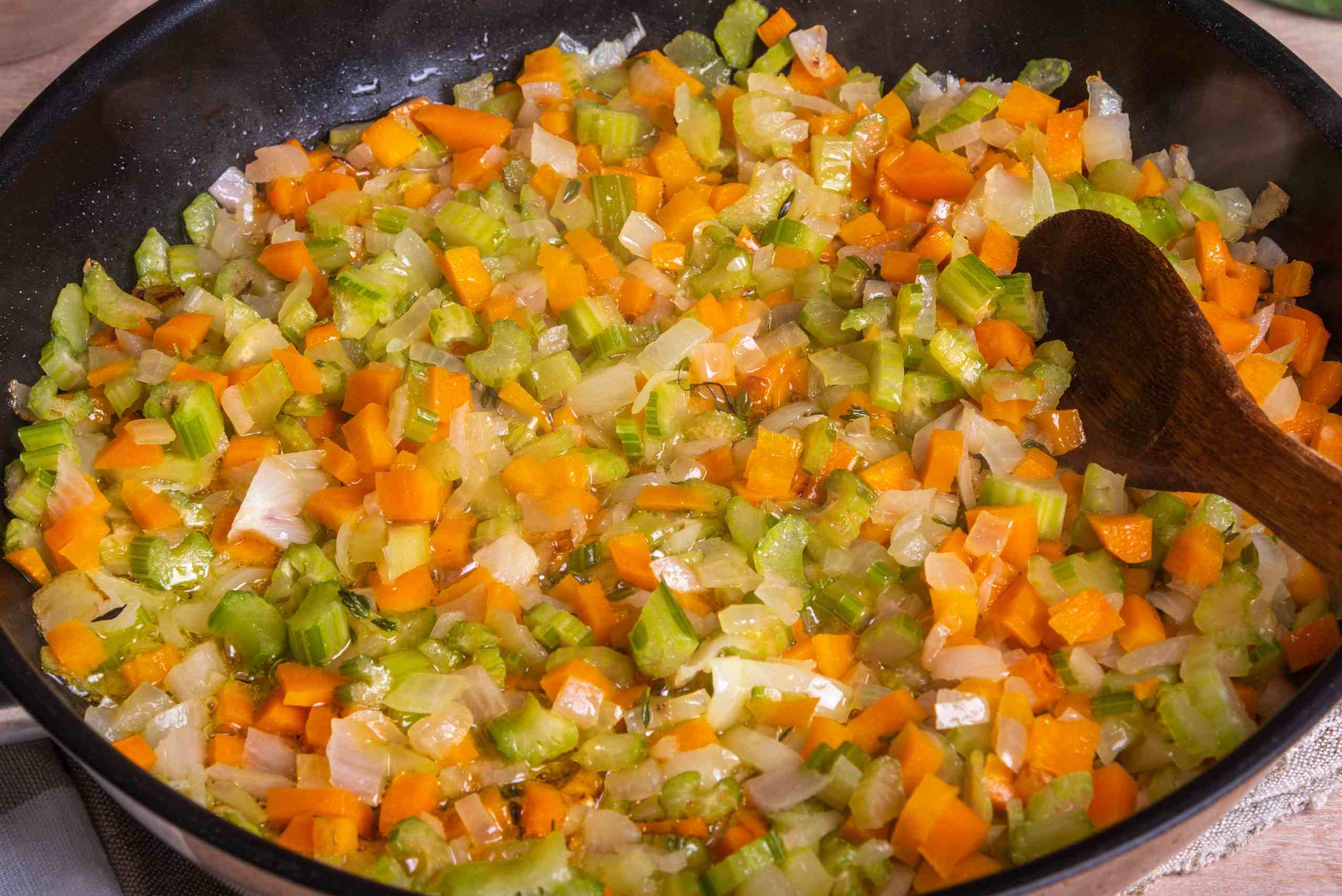
3. Raw celery snacks
Fill a celery stalk with cream cheese or peanut butter and eat as a snack. Add chopped walnuts or toasted pumpkin seeds on top for extra crunch.
4. Celery and dip
Prepare a plate of raw vegetables and dip them and the celery sticks into your favourite hummus or creamy blue cheese dip for a healthy snack.
5. Add celery to your stir fry
Thinly sliced celery makes a great addition to stir fried vegetables. Saute in sesame oil and add light soy sauce to season.
6. Make a classic Waldorf salad
This simple American salad truly celebrates celery as a hero ingredient. The classic recipe consists of just four ingredients: diced red apples, chopped celery, walnuts and mayonnaise.
7. Add crunch and texture to classic salads
Finely diced celery will elevate your tuna, chicken or potato salad to gourmet status.
8. Use celery leaves in stews and soups
Celery leaves can be chopped up in soups and stews or added to season baked fish and roasted meats. They also make a great fresh garnish on top of soups and salads.
9. Celery pesto
Celery leaves can be a substitute for parsley. To make a delicious green pesto, blend leaves with olive oil, pine nuts, parmesan, garlic and salt and pepper. Stir into pasta, gnocchi, boiled carrots and parsnips.
10. Celery Juice
The celery stalks and leaves can both be juiced to create a refreshing, detoxifying juice. Two bunches will make approximately 2 litres of juice which can be refrigerated and consumed over 4 days. If you're not a huge fan of the taste, you can make a sweeter juice with equal quantities of celery, apple and cucumber.
Try these celery recipes
Pick up some celery with your next shop to get depth of flavour to your cooking, with these easy recipes.
6 Celery Health Benefits
Celery is a nutritional source of fibre, vitamins and minerals. Eating celery provides us with many important health benefits and we should aim to eat celery regularly as part of our diet:
1. Celery supports digestion
Celery is a good source of dietary fibre and is 95% water which helps with hydration, digestion and regular bowel movements.
2. Celery prevents cell damage
Just one celery stalk contains 15 different antioxidant nutrients, including Vitamin C, vitamin K, beta carotene, flavonoids and an array of phytonutrients. These protect our blood vessels, cells and organs from damage and could play a role in cancer prevention.
3. Celery reduces inflammation
Celery contains 25 anti-inflammatory compounds, so eating just one celery stalk a day could help reduce the inflammation and pain of chronic inflammatory conditions like arthritis. Experimental studies have also shown that celery has important antifungal and antibacterial effects.
4. Celery prevents stomach ulcers
Pectin based polysaccharides in celery have been shown to alkalize stomach secretions and prevent gastric ulcers.
5. Celery helps with weight loss
At just 10 calories a stalk, celery is a low calorie food with negligible amounts of fat and cholesterol. Its high water content and fibre levels can also contribute to weight loss.
6. Celery helps to cleanse the liver
Studies have shown that celery can reduce fat build up in the liver helping to flush out poisons and toxins that have built up over time.
The detoxifying benefits of celery juice

Juicing celery is a wonderful way to gently detox the body. It contains significant amounts of potassium and Vitamin K and can flush toxins and poisons from the liver. It can help kill viruses, bad bacteria and parasites which can improve digestion, reduce bloating and create a healthy gut.
Who should avoid celery?
Celery can cause allergic reactions in some, with photosensitivity resulting in skin rashes and blistered skin from minor sun exposure. Celery is a natural diuretic and should be avoided if you have kidney ailments. Significant levels of vitamin K in fresh celery can affect people taking prescription blood thinners.
You can find out more about other seasonal fruits and vegetables available here.
Read more Fruit and Vegetable guides
Pumpkin | Kumara | Silverbeet | Asparagus | Watermelon | Afourer Mandarin | Cherry Tomato | Mushrooms | Avocado | Grapefruit | Broccoli | Celery | Potatoes | Oranges | Strawberries
